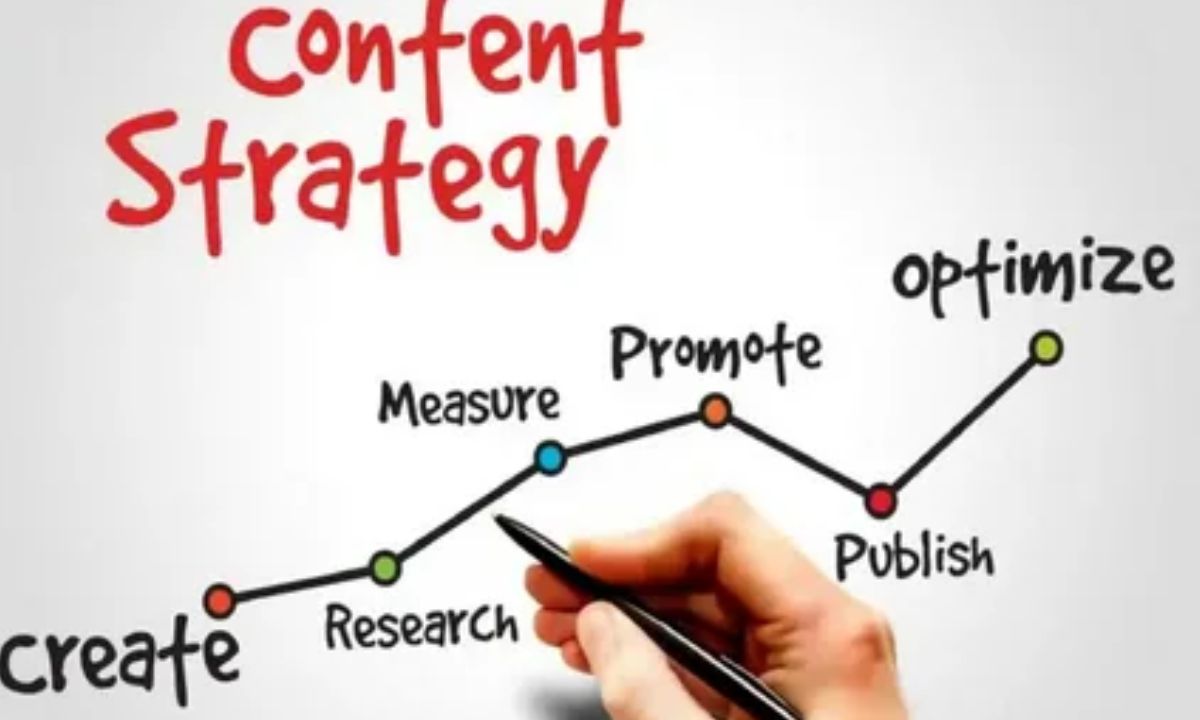In today’s digital landscape, visibility is everything. Businesses and individuals alike are constantly competing for attention on the world’s largest search engine. Learning how to get on the first page of Google search results can transform your online presence and drive significant traffic to your website.
David Aziz’s approach to search engine optimization (SEO) offers a practical roadmap for achieving this coveted position.
The difference between appearing on the first page versus being buried on page ten is stark—most users never venture beyond those initial results. This comprehensive guide will walk you through David Aziz’s proven strategies that can help you climb to the top of Google’s rankings.
Understanding Google’s Ranking Algorithm
Google’s algorithm is sophisticated and constantly evolving, but its core mission remains consistent: delivering relevant, high-quality results to users. The algorithm evaluates hundreds of factors when determining search rankings.
David Aziz emphasizes three fundamental components that Google prioritizes:
- Relevance: How well your content matches user intent and search queries
- Authority: refers to how credible your website appears, largely based on the quality of backlinks and the level of expertise displayed.
- User experience: How visitors interact with your site (bounce rates, time on page)
Understanding these factors is crucial when developing a strategy to reach the first page. The algorithm rewards sites that genuinely provide value rather than those trying to manipulate rankings through shortcuts.
Keyword Research: The Foundation of SEO

Effective keyword research is where all successful SEO campaigns begin. This process involves identifying the specific terms and phrases your target audience is searching for.
According to David Aziz’s methodology, you should:
- Target keywords with reasonable search volume (300-1000 monthly searches)
- Focus on long tail keywords,keywords length 3 to 5 words
- Consider user intent behind each keyword (informational, navigational, or transactional)
- Analyze competitor keywords to find untapped opportunities
| Keyword Type | Competition | Search Volume | Conversion Potential |
| Short-tail | High | High | Low |
| Long-tail | Low | Lower | High |
| Question-based | Medium | Medium | High |
| Local | Medium | Varies | Very High |
ools like Ahrefs, SEMrush, or even Google’s free Keyword Planner can help you uncover the most effective keywords tailored to your niche. Remember that targeting the right keywords is often more important than targeting the most popular ones.
Content is Still King
High-quality content remains the cornerstone of successful SEO. Google’s algorithms are increasingly sophisticated at determining whether content provides genuine value to users.
David Aziz recommends creating content that:
- Thoroughly addresses the user’s search intent
- Provides unique insights or perspectives not found elsewhere
- Includes comprehensive coverage of the topic (typically 1500+ words for competitive terms)
- Features engaging elements like images, videos, or infographics
- Gets updated regularly to remain current and relevant
Your content should naturally incorporate your target keywords without forcing them. This approach, known as semantic SEO, focuses on covering topics comprehensively rather than obsessing over exact keyword placement.
Remember that thin, duplicate, or poorly written content will struggle to rank regardless of other optimization efforts. Invest in creating truly valuable resources that users will want to engage with and share.
On-Page Optimization Tips
On-page SEO involves fine-tuning individual pages to improve their visibility in search engine results. David Aziz’s method for on-page optimization emphasizes several key practices:
Title Tags
Create compelling, keyword-rich titles under 60 characters. Position your primary keyword near the beginning of your content for greater impact.
Meta Descriptions
Write engaging meta descriptions (150-160 characters) that include your keywords and encourage clicks.
URL Structure
short, clear URLs that include your target keyword.
Header Tags
Use a logical hierarchy of header tags (H1, H2, H3) with keywords strategically placed in important headers.
Content Optimization
- Make sure your main keyword appears within the first 100 words of your content.
- Use related keywords throughout the content
- Break up text with bullet points and numbered lists
- Bold important concepts and keywords
- Add internal links to related pages within your site to enhance structure and navigation.
Image Optimization
- Compress images for faster loading
- Use descriptive file names
- Add alt text containing relevant keywords
- Ensure images are mobile-responsive
Implementing these on-page elements correctly sends clear signals to Google about your content’s topic and relevance.
The Power of Backlinks

Backlinks continue to be among the most influential factors in Google’s ranking algorithm. These are external websites linking to your content, acting as endorsements of your site’s authority.
David Aziz’s approach to link building involves:
- Guest posting on relevant, high-authority websites
- Creating shareable content that naturally attracts links
- One effective strategy to gain quality backlinks is by building connections with industry influencers and thought leaders.
- Reclaiming unlinked mentions of your brand
- Creating valuable resources like studies, guides, or tools that others want to reference
The quality of your backlinks matters far more than quantity. A few links from respected sites in your niche will have more impact than dozens of links from irrelevant or low-quality sources.
Focus on earning links naturally through great content rather than purchasing links, which can lead to Google penalties.
Mobile Optimization and Speed
With Google’s shift to mobile-first indexing, ensuring your site performs well on mobile devices is non-negotiable. David Aziz emphasizes that page speed is both a ranking factor and a critical component of user experience.
Key mobile optimization strategies include:
- Implementing a responsive design ensures that your website adjusts smoothly to fit all screen sizes, offering a consistent user experience across devices.
- Ensuring buttons and links are large enough for mobile tapping
- Optimizing images and videos for faster loading
- Minimizing JavaScript and CSS for mobile users
- Eliminating intrusive interstitials (pop-ups) on mobile
Utilize Google’s PageSpeed Insights to pinpoint specific areas where your site’s performance can be optimized. Even small speed improvements can lead to significant ranking benefits and reduced bounce rates.
User Experience (UX) is Critical
Google increasingly uses user behavior signals to evaluate content quality. Websites that deliver a subpar user experience often suffer from higher bounce rates and decreased user engagement—both of which are considered negative signals by Google.
David Aziz recommends focusing on:
- Intuitive navigation that helps users find information quickly
- Clear, readable typography with adequate contrast
- Apply white space strategically throughout your content to enhance clarity and readability.
- Minimal distractions and advertisements
- Logical content structure with clear headings
- Accessible design for users with disabilities
Remember that the ultimate goal is to provide value to users, not just to rank well. When users have a positive experience on your site, improved rankings typically follow.
Consistency is Key
Achieving first-page rankings requires persistent effort over time. David Aziz emphasizes that SEO is not a one-time project but an ongoing process of improvement.
Consistent activities that drive SEO success include:
- Regular publishing of new, high-quality content
- Regularly update existing content to ensure it stays current and aligned with user intent.
- Building new backlinks continuously
- Monitoring technical SEO factors and fixing issues promptly
- Keep up-to-date with search engine algorithm updates and shifts in digital marketing trends to maintain your site’s visibility.
Most websites don’t achieve first-page rankings overnight. Be prepared to invest several months of consistent effort before seeing significant results for competitive keywords.
Monitor and Adapt
Data-driven decision making is essential for SEO success. David Aziz recommends establishing robust tracking and analytics to measure progress and identify opportunities.
Key metrics to monitor include:
- Keyword rankings for target terms
- Organic traffic growth
- User engagement metrics (time on page, bounce rate)
- Backlink acquisition and quality
- Conversion rates from organic traffic
Tools like Google Analytics, Google Search Console, and dedicated SEO platforms provide valuable insights into your performance. Use this data to refine your strategy, focusing resources on tactics that deliver the best results.
Local SEO: The Secret Weapon
For businesses serving specific geographic areas, local SEO offers a faster path to first-page visibility. David Aziz highlights the importance of optimizing for local searches, which often have higher conversion rates.
Essential local SEO tactics include:
- Creating and optimizing a Google Business Profile
- Building local citations (mentions of your business name, address, and phone number)
- Earning reviews from satisfied customers
- Creating location-specific content and landing pages
- Building backlinks from local organizations and businesses
Local search results often feature a map pack with three highlighted businesses. Appearing in this section can dramatically increase visibility and foot traffic for physical businesses.
Frequently Asked Questions
How long does it take to rank on Google’s first page?
It typically takes 3-6 months for new content to reach its full ranking potential, though highly competitive terms may take longer.
Should you prioritize SEO or paid ads?
Both have their place. SEO provides sustainable, long-term results, while paid ads offer immediate visibility.
How often does Google update its algorithm?
Google makes thousands of small updates yearly, with major core updates typically occurring 2-4 times annually.
Can I do SEO myself or should I hire an expert?
Basic SEO can be self-implemented, but competitive niches often benefit from professional expertise.
Do social media signals impact Google rankings?
While not direct ranking factors, social signals can increase visibility and drive traffic that indirectly benefits SEO.
Conclusion
Reaching the first page of Google requires a comprehensive approach that addresses multiple aspects of SEO. David Aziz’s methodology emphasizes the importance of quality content, technical optimization, and strategic relationship building to improve search visibility.
Remember that SEO is a marathon, not a sprint. The most successful websites commit to continuous improvement and adaptation as search algorithms evolve. By following the strategies outlined in this guide, you’ll be well-positioned to climb the rankings and achieve that coveted first-page position on Google.
Start implementing these techniques today, and you’ll be taking meaningful steps toward improved visibility, increased traffic, and ultimately, greater online success.
Read More:Snapchat Planets: Order and Meaning Explained (2025)












